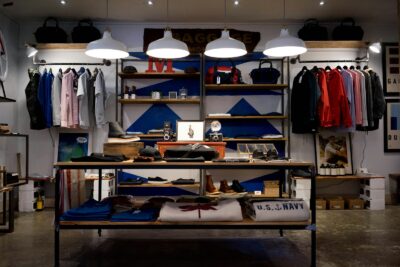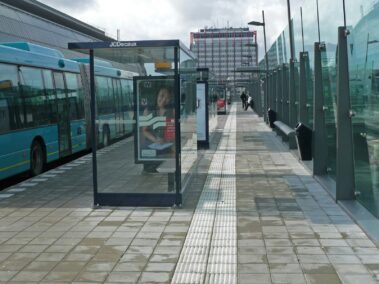Revolutionizing the Shopping Experience in the Gulf
5G-enabled virtual fitting rooms are set to transform the fashion retail landscape in the Gulf region and beyond. This innovative technology, powered by 5G’s high-speed connectivity and low latency, promises to enhance the customer experience, boost sales, and streamline operations for fashion retailers. In this article, we delve into the potential of 5G-enabled virtual fitting rooms to revolutionize the way people shop for clothes in Saudi Arabia, the UAE, and the rest of the world.
Enhancing Customer Experience with Immersive Virtual Try-Ons
One of the most significant advantages of 5G-enabled virtual fitting rooms is their ability to provide customers with a truly immersive and personalized shopping experience. By leveraging augmented reality (AR) and artificial intelligence (AI), these virtual fitting rooms allow shoppers to try on clothes virtually, without the need to physically change. Customers can see how different outfits look on them in real-time, experiment with various styles and colors, and even receive personalized recommendations based on their preferences and body type. This interactive and engaging experience can significantly improve customer satisfaction and increase the likelihood of purchase.
Boosting Sales and Reducing Returns with Accurate Virtual Representations
5G-enabled virtual fitting rooms can also help fashion retailers boost sales and reduce returns by providing customers with a more accurate representation of how clothes will fit and look on them. This is particularly important for online shoppers, who often face the challenge of not being able to try on clothes before purchasing. With virtual fitting rooms, customers can make more informed purchasing decisions, leading to increased sales and fewer returns. This can not only improve customer satisfaction but also reduce costs and streamline operations for fashion retailers.
Streamlining Operations and Optimizing Inventory Management with Data-Driven Insights
5G-enabled virtual fitting rooms can also provide fashion retailers with valuable data-driven insights into customer preferences and behavior. By analyzing data on which items are tried on most often, which styles are most popular, and which sizes are most in demand, retailers can optimize their inventory management, personalize their marketing efforts, and improve their overall business strategies. This data-driven approach can lead to increased efficiency, reduced costs, and improved profitability for fashion retailers.
The Rise of Virtual Fashion Shows and Personalized Styling with 5G
In addition to virtual fitting rooms, 5G technology is also enabling the rise of virtual fashion shows and personalized styling services. With 5G’s high-speed connectivity, fashion brands can now host immersive virtual fashion shows that allow customers from around the world to experience the latest collections in real-time. Furthermore, 5G-powered AI can be used to provide personalized styling recommendations to customers based on their individual preferences, body type, and budget.
The Future of Fashion Retail in the Gulf: A Seamless Online and Offline Experience
As the Gulf region continues to embrace technological advancements, 5G-enabled virtual fitting rooms are poised to play a crucial role in shaping the future of fashion retail. By bridging the gap between online and offline shopping experiences, these virtual fitting rooms can help retailers attract and retain customers, boost sales, and streamline operations. As more and more fashion brands in Saudi Arabia and the UAE adopt this innovative technology, we can expect to see a significant shift in the way people shop for clothes in the region.
Overcoming Challenges and Embracing Innovation: The Path Forward for 5G-Enabled Virtual Fitting Rooms
While the potential of 5G-enabled virtual fitting rooms is undeniable, there are also challenges that need to be addressed to ensure their widespread adoption and success. These challenges include the need for accurate body scanning technology, the development of user-friendly interfaces, and the integration of virtual fitting rooms with existing e-commerce platforms. Additionally, retailers need to invest in training their staff to effectively utilize and promote this new technology.
Addressing Privacy and Security Concerns
As with any technology that collects and processes personal data, privacy and security concerns need to be carefully addressed with 5G-enabled virtual fitting rooms. Retailers must implement robust security measures to protect customer data from unauthorized access and ensure compliance with relevant data protection regulations. Transparency and clear communication with customers about how their data is being used are also crucial to building trust and ensuring the ethical use of this technology.
Integrating Virtual Fitting Rooms into Omnichannel Retail Strategies
To maximize the benefits of 5G-enabled virtual fitting rooms, retailers need to integrate them seamlessly into their omnichannel retail strategies. This means ensuring that the virtual fitting room experience is consistent across all channels, whether customers are shopping online, in-store, or through mobile apps. By providing a unified and personalized shopping experience across all touchpoints, retailers can create a loyal customer base and drive sales.
The Role of 5G-Enabled Virtual Fitting Rooms in Sustainable Fashion
5G-enabled virtual fitting rooms can also contribute to the growing movement towards sustainable fashion. By reducing the need for physical samples and enabling customers to try on clothes virtually, retailers can minimize waste and reduce their environmental impact. Additionally, virtual fitting rooms can help customers make more informed purchasing decisions, leading to fewer returns and less textile waste.
#5G #virtualfittingrooms #fashionretail #retailtechnology #augmentedreality #artificialintelligence #customerexperience #fashiongulf























